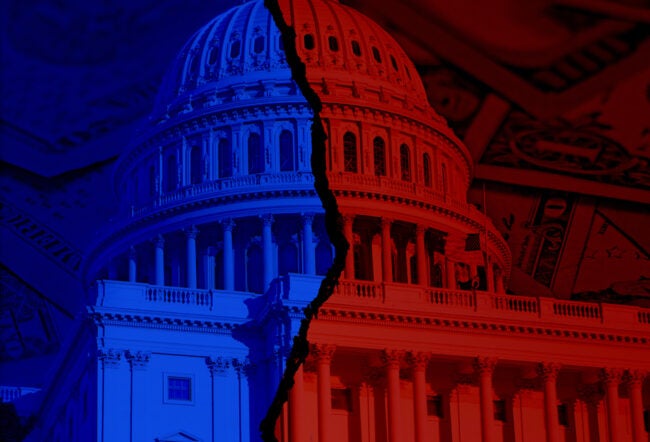The Economic Survey of India is a document presented to Parliament by the government a few days before the Union Budget. It is an analysis of the state of the economy and its prospects. Economists and analysts scan it closely because it very often reflects policy changes that will be announced in the Budget.
Economic Survey 2010-11, tabled in Parliament on February 25, had this to say about the retail sector: “Permitting FDI (foreign direct investment) in retail in a phased manner beginning with metros and incentivizing the existing retail shops to modernize could help address the concerns of farmers and consumers. FDI in retail may also help bring in technical know-how to set up efficient supply chains which could act as models of development.”
The Survey is essentially talking about multi-brand retail — the Walmarts and the Carrefours. India permits 100% FDI in cash & carry and wholesale trading (which is business-to-business) and 51% in single-brand stores (such as Gucci or Apple). Says the Survey: “FDI in retail trading is permitted in Brazil, Argentina, Singapore, Indonesia, China and Thailand without limits on equity participation, while Malaysia has equity caps.”
India was expected to join this long list of countries. But this year, finance minister Pranab Mukherjee’s Budget didn’t include any mention of retail, except for some concessions and incentives for the cold storage sector. “We expect [permission for FDI] to come in phases,” says Pinaki Ranjan Mishra, Ernst & Young (E&Y) partner and national leader, retail and consumer products practice. “This sector needs funding, and FDI is a good source of funding.” Adds Thomas Varghese, CEO of Aditya Birla Retail and chairman of the Confederation of Indian Industry (CII) National Committee on Retail: “While there were expectations from the industry regarding the announcement of FDI in retail, we do realize that the Budget is not an exercise to announce policy measures.”
Green Signal This Summer?
Since the Budget, there has been a steady stream of indications that the green signal for FDI is on its way. “Expect something before the summer is out,” the newspaper Hindustan Times reported commerce secretary Rahul Khullar telling the U.S.-India Business Council in mid-March. In New Delhi, U.S. economic, energy and business affairs additional secretary Jose W Fernandez told the Indo-American Chamber of Commerce that easing of the retail ban would give a big boost to FDI flows into India, which have been declining the past couple of years.
While retail has been left in cold storage, other reform measures are making some progress. A day after the Washington statement, the Union Cabinet approved the Pension Regulatory Fund & Development Authority Bill. Among other things, this allows 26% foreign investment in the sector. Before that, the government had approved a move to amend banking regulations to allow more foreign investment in the sector. Mukherjee has also appealed to industry to help build a consensus to allow foreign investment in the insurance sector to be increased from 26% to 49%. These bills will, of course, have to be cleared by Parliament before they become law.
It’s Parliament that is the stumbling block. The government has already been hit by a string of scandals (see Capital Plight: What Drives Corruption in India?). Now there’s even more. A close aide of arrested telecom minister A. Raja has committed suicide; an investigation is taking place. U.S. diplomatic cables posted on WikiLeaks say that opposition members were bribed to vote for the government or abstain during a trust vote in July 2008. Says Harish Bhat, chief operating officer (watch division) of Titan Industries: “This is a politically sensitive year.”
Elections are coming up over the next few months in four states. FDI in retail has been projected as a huge threat to the unorganized sector — the kiranas (mom-and-pop stores). “The Indian retail sector comprises 13% of GDP and employs 6% of the nation’s workforce,” says a 2008 PricewaterhouseCoopers (PwC)-CII study titled, “The Benefits of Modern Trade to Transitional Economies.” Allowing FDI at this stage could alienate this huge vote-bank.
Passing the Buck
Expectedly, the subject is a hot potato. An inter-ministerial group set up to make recommendations on the issue has passed that responsibility on to the Cabinet. “[The group] has restricted itself to analyzing the pros and cons of such a reform,” says business daily Financial Chronicle. “The group has vetted 175 responses from stakeholders to a discussion paper on FDI in multi-brand retailing. Opponents outnumbered supporters by 109 to 63 while three were neutral…. 73 of the 109 opponents belong to one category — local traders and retailer associations. Other opponents include manufacturers, small retailers and NGOs (non-governmental organizations). Supporters [included] industry chambers, including apex chambers CII and FICCI, national institutions, think tanks, organized retailers, law firms and prospective investors.” Says the PwC-CII paper: “Allowing FDI into the retail sector will usher in large global companies who will need to hire millions for their pan-India retail operations.”
The PwC-CII paper adds that there are around 12 million kirana stores in India. It is this constituency that has been mobilized to oppose FDI in retail. The more vociferous elements, however, are the middlemen and traders. They stand to lose their livelihoods altogether, while most observers — including think-tanks brought in by the government to study the issues — feel the kiranas will be successfully integrated with modern retail.
Others who could have been expected to be against FDI in retail are the established chains. But opinion here is divided. “We are not against FDI in foreign retail,” says Kishore Biyani, CEO of the Future Group, India’s largest retail chain. “The government understands what is required for the country and it will do the needful.” Govind Shrikhande, managing director of Shoppers Stop, has a question for the Walmarts and the Carrefours: Why aren’t they going the whole hog in the cash-and-carry segment where 100% FDI is allowed? (Carrefour opened its first cash & carry store in India last December; Walmart has five such stores in India in a tie-up with telecom major the Bharti Group.)
“At Reliance, we are okay with FDI not coming in,” says Bijou Kurien, president and chief executive (lifestyle) of Reliance Retail, a Mukesh Ambani venture. “We have partnerships only in the specialty and luxury space with marquee brands [like Marks & Spencer, Office Depot, Hamleys] and not in the big-ticket hypermarket or grocery space. We have run the distance long enough by ourselves. After having burnt our fingers during this learning phase we don’t want to get into partnerships now and share our topline and bottomline.”
Varghese is on the other side of the fence. “Both from an industry perspective and as head of Aditya Birla Retail, we would be delighted if FDI in retail is announced,” he says. “We look at it as one of the biggest sources of funding for our future growth plans. We look at it more from a funding aspect rather than the point of view of strategic domain expertise even though that is also important. As domestic retailers, we don’t feel threatened. We think that high quality international competition will be good for us.”
Money Matters
The funding — though overshadowed by the kirana issue — is important. Some domestic retailers have had to fold up because they expanded too fast and couldn’t finance their plans. “The past two to three years has seen the collapse of some big retailers of the 2006-2008 boom,” says Kurien of Reliance. He gives the example of Vishal, Subhiksha and Koutons. While Subhiksha has closed down, Vishal was sold in mid-March for US$15.5 million. Three years ago, it was valued at US$500 million.
People with deep pockets — like Reliance, the Birlas or the Tatas (group retail flagship Trent has a tie-up with Tesco) can ride out the downturns. Newer players don’t have that luxury. “Last time, funds were available from bankers and private equity investors,” adds Kurien. “But having burnt their fingers, they are now very careful about lending to retailers. [The period between] 2006-2008 was also led by a property boom.”
The cost of real estate is one of the biggest challenges for retailers, says Anshuman Magazine, chairman and managing director of real estate consultancy CB Richard Ellis. “Rentals have now been negotiated on a revenue-sharing basis,” he says. “That helps as the upfront cost and, therefore, the risk is lower.”
Real estate — particularly the prime real estate they are now occupying — gives the small firms a small edge over newcomers. “The small players have a locational advantage — especially in large cities,” says Prashant Agarwal, joint managing director of strategy consulting firm Wazir Advisors. He feels that when the foreign players come in, the marketing wars will be fought mainly in newly-developing urban centers. Adds Bhat of Titan: “A lot of the expansion for both Titan and all major retailers is going to happen in the Tier 2 and Tier 3 towns.” Titan has 650 stores today and plans to add 300 more in 2011-2012.
Everyone on Expansion Path
Like Titan, others are planning expansion. Reliance Retail currently has around 1,150 stores. According to Kurien plans are to increase the number to 1,500-1,600 in 2011-2012. “Except for a six-month period in 2008-2009, we have been expanding continuously. But we resumed expansion with a qualification; we are now looking only at those formats which are performing well. Everyone realizes that expansion needs to be done in a measured and calculated manner.” Incidentally, the US$1 billion turnover Reliance Retail is still in the red. “But there are pockets of profitability. We have not built scale as yet,” says Kurien.
Aditya Birla Retail has 554 supermarket stores and nine hypermarkets. “We plan to put up another 120 supermarkets and 10 hypermarkets in 2011-2012,” says Varghese. At its peak in 2008, the company had around 750 supermarkets. “But we closed many of them as part of a cleaning process,” adds Varghese. “We are currently profitable at the store level,” he continues. “We will be profitable at an enterprise EBIDTA (earnings before interest, depreciation, taxes and amortization) level by March 2013. And we will be a cash positive company by 2015-2016. We are on course on these milestones.”
At the Future Group, Biyani is selling stakes in several companies to retire debt and focus on his core retailing business. The diversifications in which he is partly divesting include consumer finance, insurance and logistics.
“The next two-three years will see most of the players expanding their scale aggressively across the country,” says Mishra of E&Y. “In the retail business you have to expand to increase your profits. There is no other route.” The bottomline is that everyone — big and small — needs money. “This sector needs funding and FDI is a good source,” Mishra says. He expects the easing of FDI rules to be phased out. “Many Indian retailers who are cash strapped are looking forward to FDI in multi-brand retail for the investments that it will bring in,” says Varghese of Reliance. “It will also make joint ventures easier, simpler and cleaner.”
The Charm of the Indian Market
Indian companies need money. But what explains the attraction from the other side? Why is FDI in retail being built up as the beacon of the next phase of liberalization? The answer is in the numbers. According to the government’s Economic Survey, “The retail sector is expected to record healthy sales in 2010-11 and grow by 10.2% in 2011-12. The sector’s PAT (profit after tax) margin is expected to expand over the next three years on account of a faster rise in income vis-a-vis expense.” Adds the PwC-CII study: “India is ranked as one of the world’s most exciting retail destinations.” The study says that India’s retail sector is worth an estimated US$350 billion and is growing between 30% and 40% per annum. (This relates to 2008, but there is a huge divergence in the absolute numbers and growth estimates put forward by various organizations.)
“Despite about 75% of India’s population earning less than US$2 a day, the Indian retailing context could appeal to foreign firms due to rising income levels of consumers in several segments; the low penetration levels of several product categories; the huge presence of the unorganized sector with regard to offerings that provide scope for penetration of branded goods; the emerging youth population that is going through a radical change of lifestyles; and, of course, the unorganized nature of retail sector itself,” says S. Ramesh Kumar, professor of marketing at the Indian Institute of Management Bangalore. “However, unlike in the West, the kirana stores will continue to be a part of the Indian scenario for several years given the shopping styles of consumers (only a fraction would be interested in driving to huge stores to stock up items for the entire week). The culture of shoppers to shop daily coupled with lack of storage space make the kirana store a part of the Indian middle class.”
Kumar doesn’t see smaller Indian retailers giving up in the face of a FDI invasion. “The small organized neighborhood store [like Subhiksha] with limited SKUs (stock-keeping units) offering discounts to consumers is also a good strategy provided they are able to get the supply chain and choice of merchandise right.”
He gives a snapshot of the future of retail in India as he sees it. “Multiple formats will become the trend [like the Tesco’s chain in the U.K.]. Private labels offering good value will have huge scope given the escalating prices of conventional branded offerings. Retailers like Reliance or Big Bazaar [Future Group] will have an advantage due to their scale. Such outlets will attract a huge consumer base in urban markets due to their variety as well as value-based sales promotion plus private labels. Consumers will divide their purchases between kirana stores and modern retail outlets.”
Organized Sector Growing
For many, India is an inevitable destination. According to the 2010 A.T. Kearney Global Retail Development Index report, the retail market in India is worth about US$410 billion. “But only 5% is through organized retail, meaning that the opportunity in India remains immense,” says the report. “Retail should continue to grow rapidly — up to US$535 billion in 2013, with 10% coming from organized retail.” A.T. Kearney puts India as one of the top three countries in retail expansion. It has, however, slipped a couple of notches from the No. 1 position it occupied until recently.
“The retailing industry is now estimated at US$420 billion and organized retail is estimated at US$20 billion,” says Agarwal of Wazir. “In 1990 the size of the industry was around US$120 billion and organized retail around US$0.6 bn. So while growth in the retail sector has been around four times, the organized retail sector has grown about 35 times.” While organized retail has been growing in size, the kiranas have been growing in numbers. Agarwal estimates that the mom-and-pop stores have gone up from 7 million to 12 million in the same period.
If FDI is going to happen anyway, why is there so much excitement about it now? The reason is that this is an opportunity to push it through. India, like many other parts of the world, is suffering from high food inflation; at its peak earlier this year, it crossed 18%. India, unlike other parts of the world, suffers from huge wastage in the food chain. “Researchers estimate avoidable supply chain costs (wastage, excess inventory and excess transportation costs) in Indian food and grocery sales to be about US$24 billion,” says the PwC-CII report. “One of the arguments in favor of FDI is that it will bring with it the technologies and expertise required to build robust food supply chains.”
The Reserve Bank of India (RBI) is concentrating on tackling inflation and is raising interest rates. This, in turn, is making the cost of money too expensive for companies and they are postponing investment plans. The heady GDP growth that India is expecting can get derailed if inflation continues to stay high. FDI in retail can thus be sold as a solution for inflation — the food inflation component — without hampering growth. It makes it more palatable to constituencies opposed to the idea.
Not everybody accepts the connection, however. “I think modern retail has nothing to do with food inflation,” says Biyani of the Future Group. Shrikhande of Shoppers Stop says there can be a noticeable effect only when organized retail touches a 20% share. “That does not look likely for the next 10 years,” he says. Adds Varghese of Aditya Birla Retail: “It is believed that FDI will help in controlling food inflation by improving the supply side. Of course, even today there is no restriction on FDI in the cold chain and the supply chain. But then which [foreign] player would want to invest in this without having the comfort of knowing that the front end will also be open to them.”
If the straws in the wind are to be believed, FDI in retail could happen any day. In the latest installment of the WikiLeaks saga, it’s the opposition Bharatiya Janata Party which is in the dock; the leaked cables show that the party was apparently opposing the nuclear deal in July 2008 merely to win some brownie points. It had assured U.S. diplomats that it wouldn’t seek to amend the deal if it came to power. Yes, elections are coming. But these are to state assemblies and will not affect the composition of the Lok Sabha, the lower house of Parliament. This could be just the time to open the floodgates a bit. Says Bhat of Titan: “FDI in multi-brand retail is one of the most progressive steps the government can take.”



